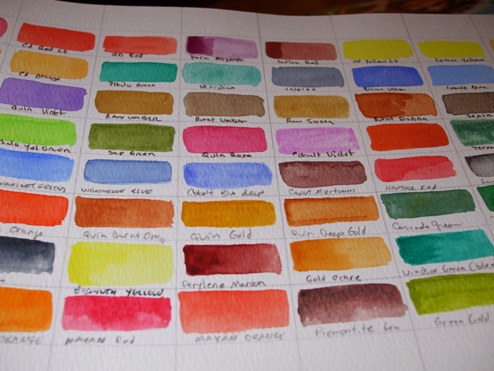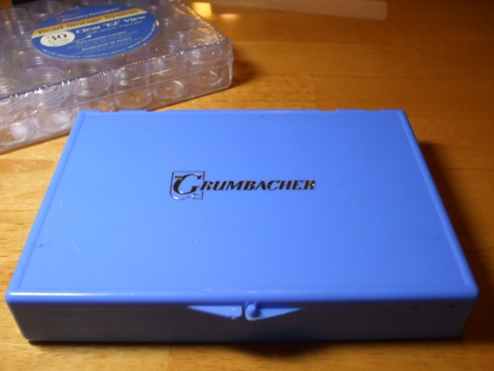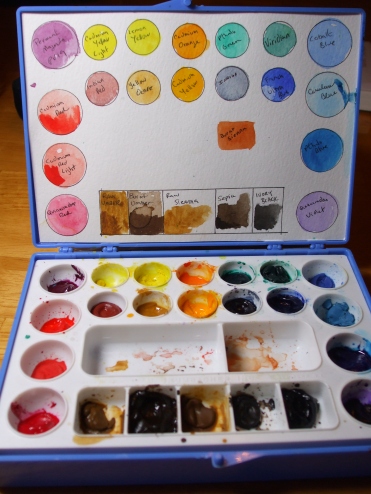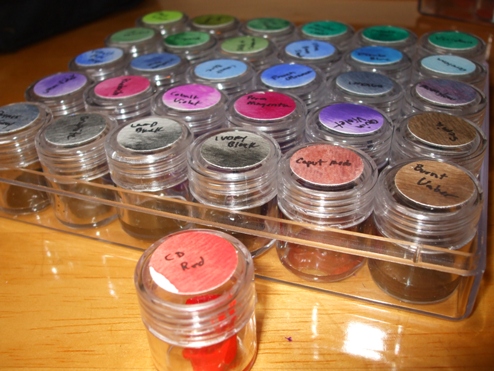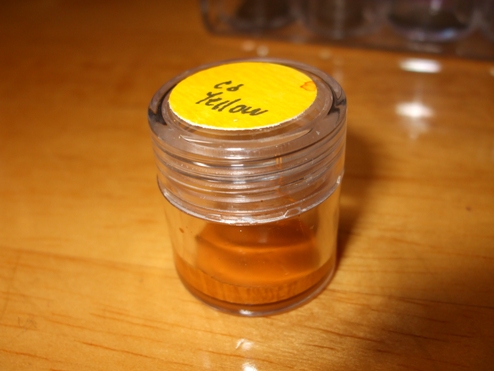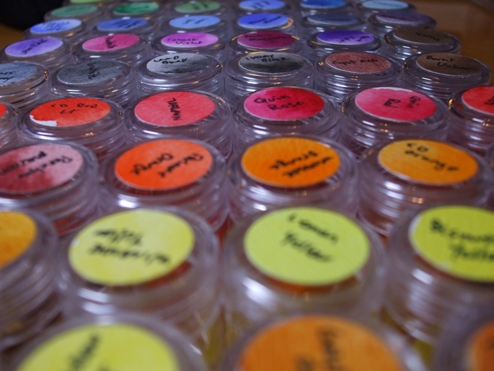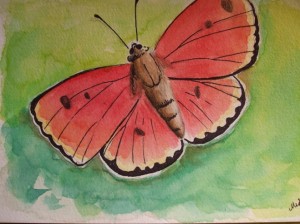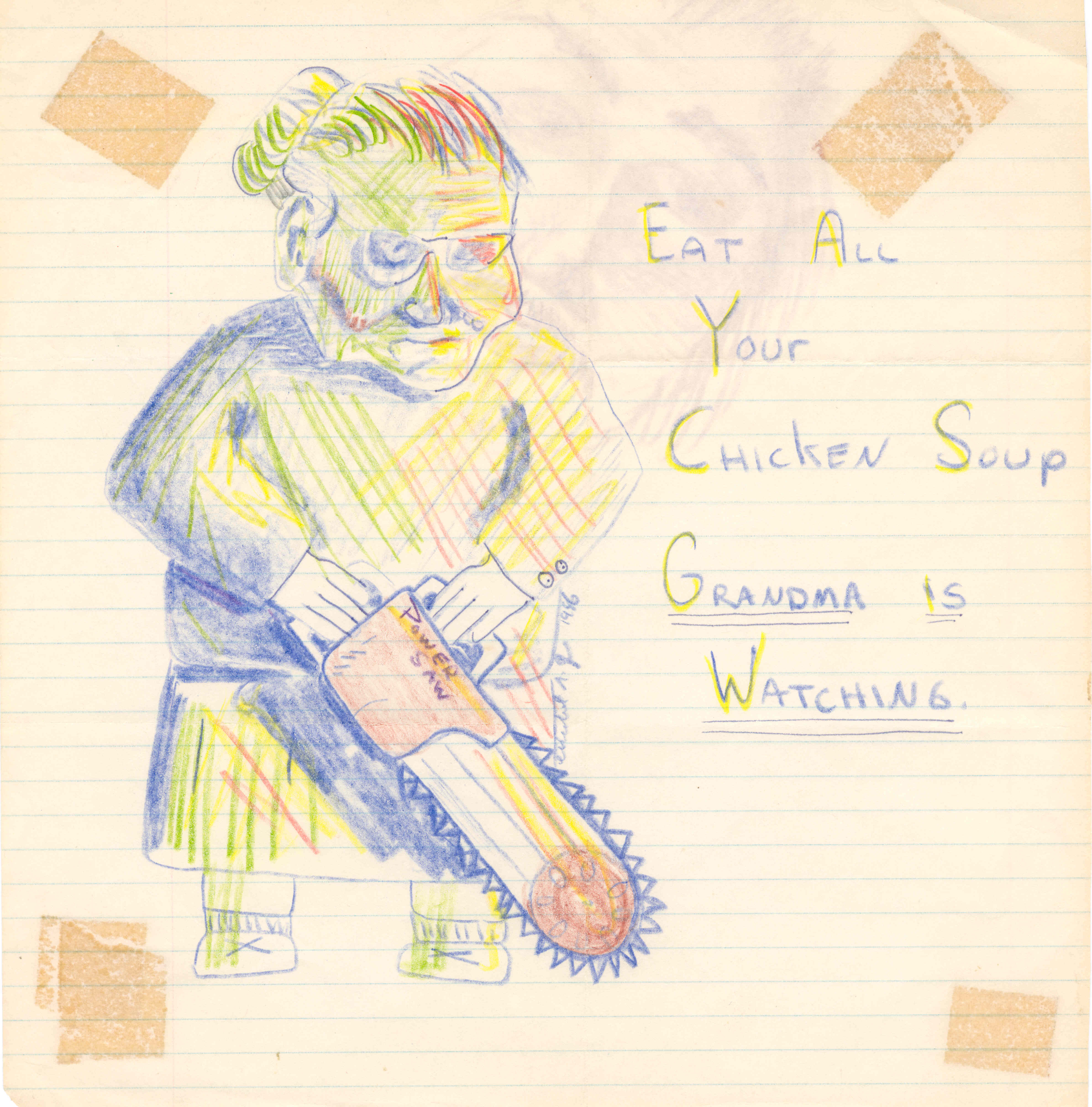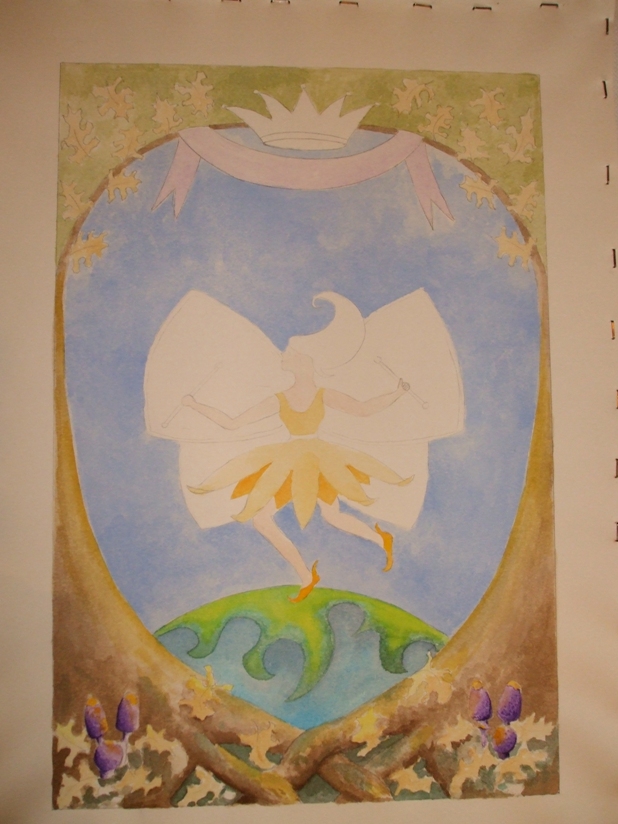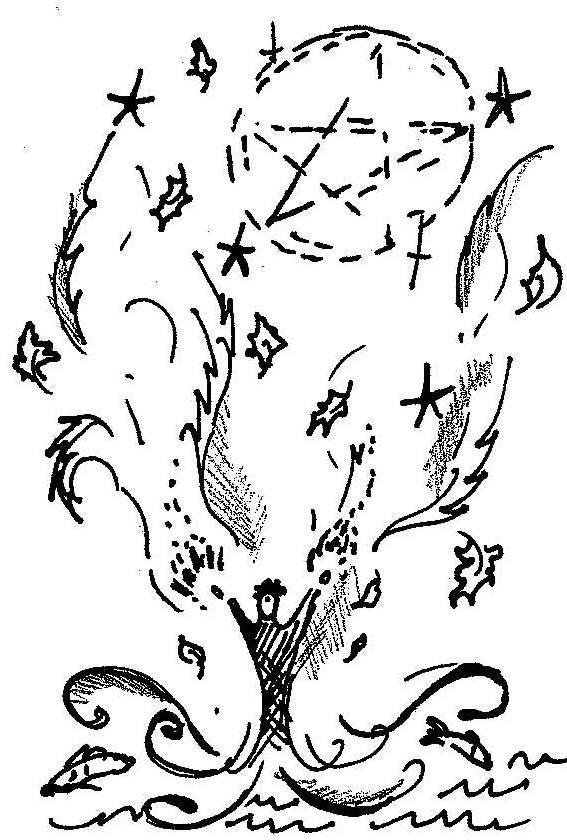It was decades ago, somewhere between my teen and early adult years, when I first decided that I was interested in working in watercolor. Until then – I was happy using the Crayola set of 8 colors that many of us will be familiar with. This was a big improvement over the tin box I received at some point as a child. That set – which is still sitting in a box somewhere – was remarkable in its ability to resist water. I swear that each pan was coated with a layer of shellac just to keep the kids busy a few minutes longer. In any case, the little set of eight colors I had progressed to was, and still is, quite versatile, but I’m not one to limit myself to the basics.
I believe in the watercolor world there are two kinds of people – those who work from pans of color and those who work from tubes. I’m a pan kind of guy. I like to buy my paint in tubes and then fill some sort of permanent container with the colors for my use. If I need a large amount of something, I just get the tube and work that way. I’m sure years of working with watercolor sets as a child have influenced me.
So back to my young adulthood, all those years ago I had stumbled upon a palette box by Grumbacher which contained about twenty-five little wells and for years I was happy with it. I’m not sure if it was for watercolor or ink or what have you but I filled it with the basic colors and it served me well for a long time. The lid was a perfect place to paste in a piece of watercolor paper for reference. This set up makes me happy.
As it happens with much of my art & craft supplies, my collection of paints has increased. Note: This is the point where all the purists go crazy and begin to lecture me about how you only need six colors, maximum and you can create any color from those very basic collections of warm and cool basics. If you want to go over the top you are allowed to take in a few earth tones, but don’t overdo it!
I say BAH!!!! I was not put on this earth to limit myself to a tiny color palette!
When I embarked on my mission to “Find Art Again” I pulled out my old blue box and began to search for another one so I could expand my available “pans” of color. Of course the Grumbacher paint box was nowhere to be found. I wanted something that would allow me to expand to new colors as I found them but also to be flexible and somewhat portable.
There are several “pan” boxes out there which would allow me to buy empty pans, fill them with my own color and rotate as desired. The cost of about $60 for a metal box with plastic inserts just didn’t sit well with me. At that rate my Altoid’s mint boxes should be worth at least $5 a piece and I must have a fortune in soup cans at home. For the record there are projects out there for making a travel palette from old mint tins and fimo clay. I looked at make-up artist palettes but they were black in color and did not look like they could travel if needed. I purchased a few Mijello Palettes but they sit in a drawer. Next I decided that a custom solution might be in order. I found these little paint containers sold at most craft stores and an idea began to form. The main issue was how I would store and track all of these little containers. They are sold loose and the packages contained several sizes. Some were opaque and others the wrong size. None of them came in a handy storage box. How could I make them useful?
Then one day I stumbled upon these little containers by Darico that I think are designed to hold beads for jewelry makers. They were exactly the right size for my needs, everything was clear plastic. There was a container with a lid. I could work with this.
So I began by making swatches of my paint colors and then I punched them out with a circle punch which was slightly smaller than the jar lids. I glued them on with a little dab of white glue, labeled them with permanent ink and have found this to be a workable and flexible system for my watercolor pans.
So far I’ve enjoyed this type of paint box. Perhaps the only thing I miss from my old Grumbacher box is the color chart that I’ve pasted to the cover. The chart is a very useful thing to have. I’d like to design something in the future that would allow me to arrange a selection of jars into a holder without the lids, but to still keep track of the contents either by a color chart or something that holds the lids to function as a color chart. I’m sure I will come up with something – I just need more time to figure it out.
I’m sure many will think this is just too complicated or time waster but once it was all in place there isn’t much to think about and every color I want is instantly at my disposal. I can arrange colors any way I see fit depending on my project. I can grab a few key colors if I want to take my paint on the road.
I wonder if anyone else has ever done this or how they have solved the same need in the studio. This is what happens when crafter meets artist I suppose. There is a project in everything!

